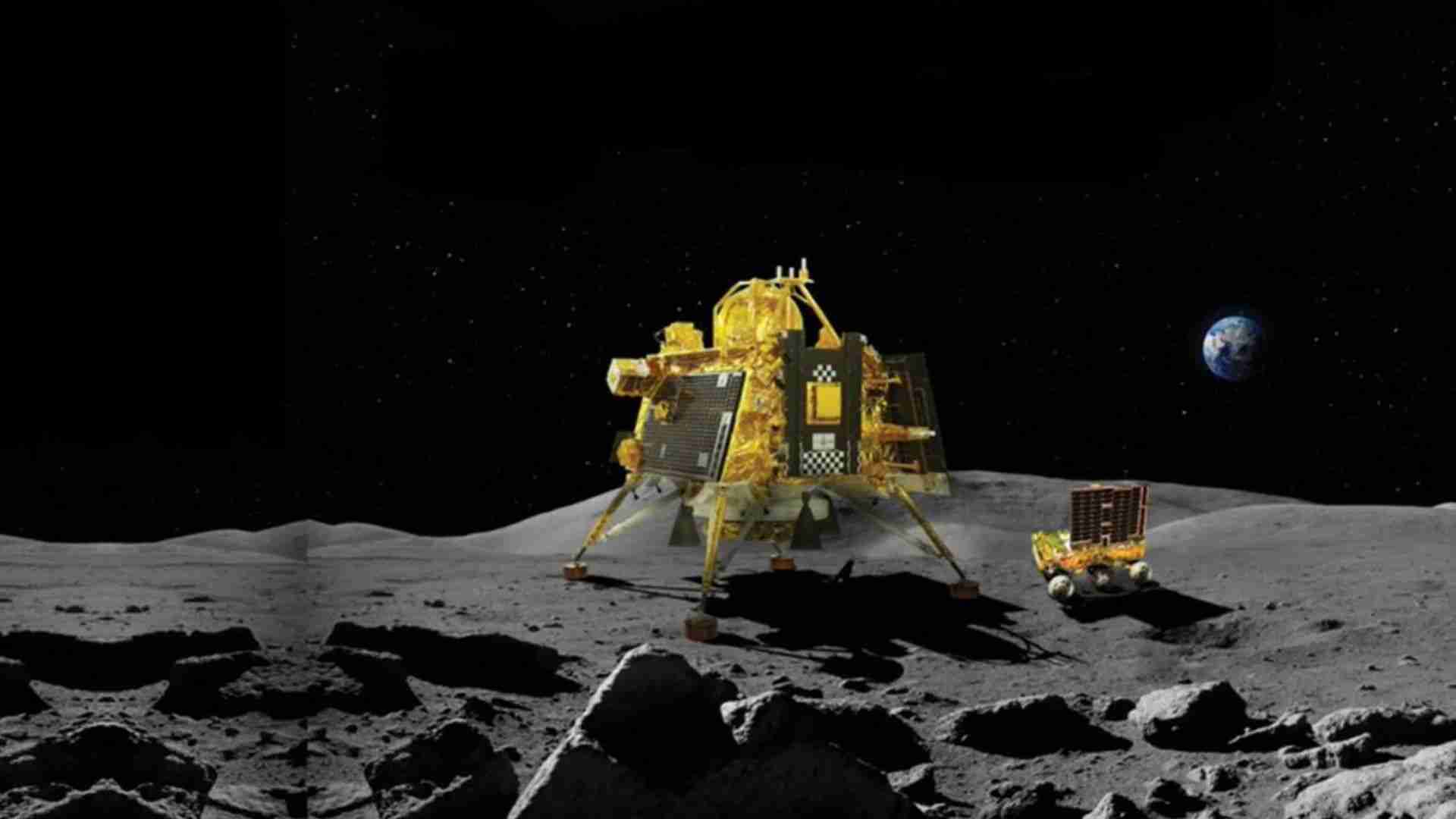Chandrayaan-3 is on track for a significant milestone as it prepares for a scheduled landing on the Moon’s south polar region on Wednesday at 6:04 pm, following a 40-day journey. The Indian Space Research Organisation (ISRO) has confirmed that the mission is proceeding according to plan.
The Chandrayaan-3 mission, which is a continuation of Chandrayaan-2, aims to demonstrate safe and soft-landing capabilities on the lunar surface, rover deployment, and in-situ scientific experiments. If the mission successfully achieves a lunar touchdown and deploys the robotic lunar rover, India will join the ranks of the United States, China, and the former Soviet Union as the fourth country to master soft-landing technology on the Moon.
Chandrayaan-3 comprises three key components: the Lander Module (LM), the Propulsion Module (PM), and the Rover. The Lander Module is tasked with performing a soft landing at a designated lunar site, after which it will deploy the Rover to carry out research on the lunar surface. Both the Lander and the Rover are outfitted with scientific instruments for surface experiments, while the Propulsion Module’s role is to transport the Lander Module from launch to its final lunar orbit.
The mission was launched on July 14, 2023, aboard the Launch Vehicle Mark-III (LVM-3) rocket, embarking on a 41-day journey to the Moon’s south pole at a cost of approximately Rs 600 crore. The spacecraft executed a series of orbit-raising maneuvers to gradually increase its orbit before transitioning towards the Moon. The Trans Lunar Injection (TLI) maneuver on August 1 propelled the spacecraft into lunar orbit, which it entered on August 5. Subsequent orbit reduction maneuvers were carried out on August 6, 9, 14, and 16, with the final one successfully completed on August 16.
On August 17, the Lander Module (LM), which includes the Vikram lander and the Pragyan rover, separated from the Propulsion Module. A “deboost” maneuver was then executed, placing the lander in an orbit with a Perilune of 30 kilometers and an Apolune of 100 kilometers. After a second and final deboost operation on August 20, the Lander Module was positioned in a 25 km x 134 km orbit around the Moon. The landing attempt is set for August 23 at 6:04 pm.
The Chandrayaan mission series, initiated by ISRO, began with Chandrayaan-1, which was launched in 2008 and successfully entered lunar orbit. However, Chandrayaan-2 encountered a setback during its lunar phase when its lander, Vikram, crashed into the Moon’s surface on September 7, 2019, due to issues with the braking system.
Upon landing, Chandrayaan-3 is expected to remain operational for approximately two weeks, during which it will conduct a series of experiments, including a spectrometer analysis of the lunar surface’s mineral composition. Shortly after touchdown, a side panel of the Vikram lander will unfold to create a ramp for the Pragyan rover. The rover will then descend onto the lunar surface and begin its activities, moving at a speed of 1 cm per second, while transmitting data about the lunar surface and its processes.
In addition to transporting the Lander Module, the Propulsion Module also carries the SHAPE payload—Spectro-polarimetry of Habitable Planet Earth—which will be used to study Earth from lunar orbit. The success of Chandrayaan-3 will not only enhance India’s space exploration capabilities but also stimulate investment in private space launches and satellite-based businesses.







